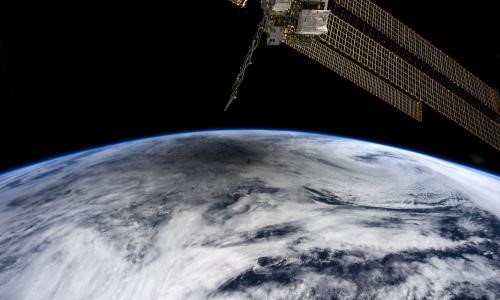On Monday April 8th, North America will experience its first total solar eclipse event since 2017. Its path of totality (where viewers can see the Moon totally block the Sun), will pass over Moog global headquarters in East Aurora, NY at about 3:20 PM EDT. Around Moog, we’re curious to understand what impact the solar eclipse may have on satellites in space at the time when the eclipse occurs. In this blog, we dive into the topic by interviewing subject matter experts around our company who can provide valuable insights into what happens to these satellites during an eclipse. By the end, readers will gain a deeper understanding of its effects on our technological infrastructure in space. Here’s what we found out.

Will satellite computers work during a solar eclipse?
Spacecraft normally operate in orbit with times of exposure to the sun and times without. To account for this, Moog avionics (which include the on-board computers as well as the power management/distribution) control and maintain the battery charging power from the solar arrays as well as the power provided to the spacecraft. This means that as the solar energy fluctuates, whether in normal orbital exposure or during an eclipse, power is managed and provided to the system..
An eclipse will mean interruptions in solar power, does that mean our Moog Solar Array Drive Assemblies (SADA) have to do something different?
An eclipse is a normal occurrence for the vast majority of our solar array drive assemblies operating in either a low earth or geosynchronous orbit. These spacecraft experience an eclipse once per orbit as they pass behind the earth, which shields the spacecraft from the sun. Provided that the spacecraft has sufficient battery power to operate for the duration it will be eclipsed, no special action will be required for our SADA’s. Normal solar power will be restored once the spacecraft exits the eclipse.

Will a satellite’s propulsion system have to work overtime or shut down and power back up during an eclipse?
Not really! While almost all satellites in orbit do use solar power, they’re also already designed for longer periods of being in shadow as they go around the Earth. Depending on the orbit, satellites might spend up to 2-3 minutes each orbit being completely in the Moon’s shade, so they are designed with enough batteries to keep the satellite operational while in “nighttime.” At most, a propulsion system will take a short break to not run down batteries unnecessarily during the eclipse, or more likely, just schedule maneuvers around the eclipse for that one day.
We hope everyone has the chance to enjoy this celestial phenomenon when it passes over North America this upcoming Monday. While we found out that it may not have much of an impact to our solutions orbiting the earth, it is an important contribution to NASA’s research into the Sun’s outer atmosphere[1] and a fun event for all to enjoy.
[1] (https://www.nasa.gov/science-research/heliophysics/2024-eclipse-partnerships/)
Interested in speaking with Moog? Contact us at space@moog.com
